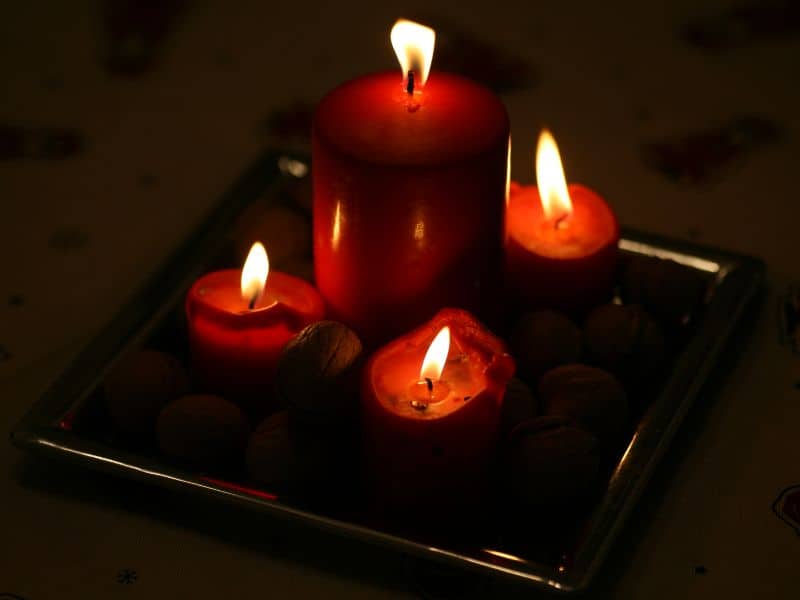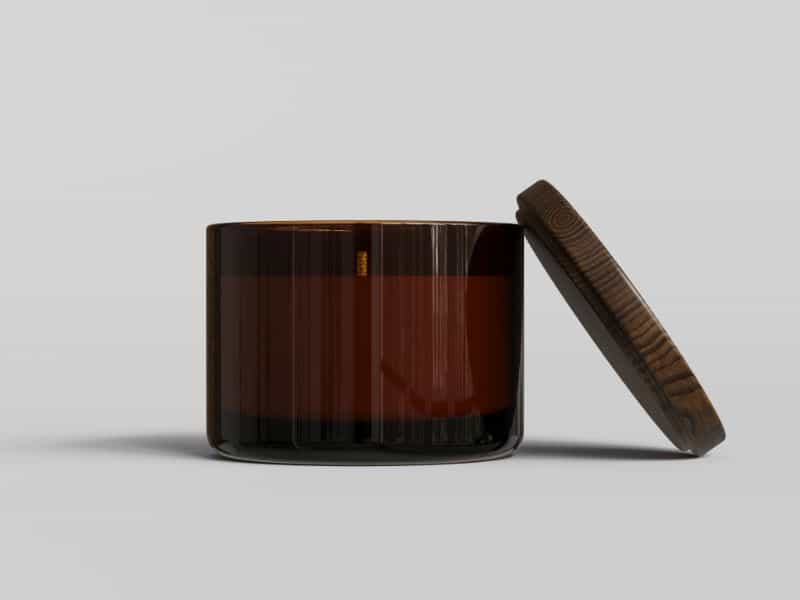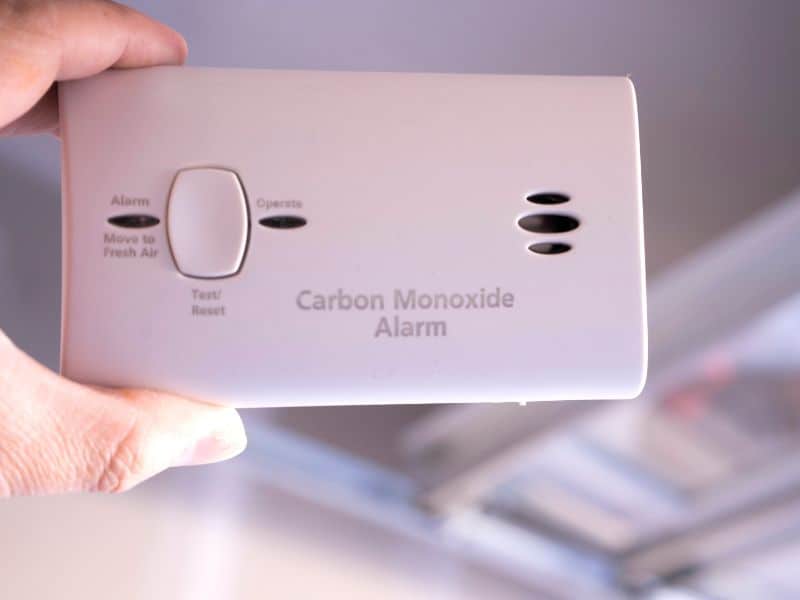Candles create a calming ambiance, a romantic mood, or a festive spirit. Beyond their use in decorations and ceremonies, candles have a fascinating aspect: their burning process. Many of us wonder, “Do candles burn out on their own?” This simple question opens up a world of discovery about how candles work, how long they last, how to use them safely and do they burn out on their own?
Candles can burn out on their own. Wicks featuring a metal base can help a candle safely self-extinguish, and heat-resistant containers can assist in this process. However, despite these safety features, it is never recommended to leave a candle burning unattended.
Building on this, always remember that a candle’s behavior is influenced by several factors. These include its design, quality, and the environment where it’s used.
Although a metal-based wick and a heat-resistant container are helpful, they don’t eliminate all risks. The safest approach is proactive monitoring.
Ensure that a candle, once lit, remains in your direct line of sight. This practice minimizes potential hazards and gives you peace of mind.
Do Candles Self-extinguish?
A burning question for many is, “Do candles burn out on their own?” The answer isn’t so simple. In many cases, candles can and do self-extinguish. The reason lies in their very design. A candle’s wick transports the liquid wax upwards. As the wax vaporizes, it feeds the flame. When all wax is consumed, or if the wick is fully burnt, the flame dies out.
But there’s more to the story. Candles differ in size, shape, and quality. Some candles, like tea lights and votives, are more likely to burn out on their own. This is due to their smaller size and lower quantity of wax. On the other hand, larger candles may not burn out completely. They might leave a ring of unused wax around the edge.
Some wicks are designed to curl back into the flame as they burn. This ensures they get fully consumed. However, not all wicks are made this way, affecting whether a candle self-extinguishes.
Risks of an Unattended Candle
Leaving a candle burning unattended is risky. Even if candles can self-extinguish, it’s not always a sure thing. One risk is that the candle could topple over. This might happen due to a pet knocking it over or a breeze from an open window. If a candle falls, it can ignite nearby flammable materials. This could lead to a fire.
The second risk concerns the heat a candle generates. As a candle nears the end of its life, the flame can get very close to the holder. If the holder is made of a material like glass, it could crack or explode from the heat. Pieces of the holder could scatter and potentially cause injury or fire.
Let’s not forget about the smoke. When a candle is near the end, it may produce more smoke than usual. This smoke can be harmful to inhale. It can also trigger smoke detectors, causing unnecessary alarm.
What to do if You Realize You Left a Candle Burning?
Imagine you’ve just left the house, and you remember that a candle is still burning. Here’s what to do. First, don’t panic. Head back home as soon as possible. It’s not ideal to leave a candle unattended, but a few extra minutes usually won’t result in disaster.
Once home, extinguish the candle. Hold your breath to avoid inhaling smoke. Always use a snuffer or a spoon to put out the flame. Blowing on the flame can cause hot wax to splatter, risking burns or a fire.
Learn from the experience. To avoid such situations, try setting a reminder on your phone to check all candles before leaving the house. Always placing candles on a stable, heat-resistant surface, away from flammable items, can also help to avoid any possible issues. Remember, when it comes to candles, safety should always come first.
How Long Does it Take a Candle to Burn Out?
Figuring out how long it takes for a candle to burn out can be tricky. It isn’t as simple as looking at its size. In fact, it depends on many factors. The type of wax, the size of the wick, and even the quality of the candle can all play a part.
For example, let’s take a standard pillar candle. A well-made pillar candle often burns about 7 hours per inch of its height. So, a 3-inch pillar candle would likely burn for around 21 hours. Tea lights, being smaller, typically burn for 4 to 6 hours. On the other hand, large, high-quality scented candles can burn up to 90 hours!
These are just rough estimates. Remember, the actual burn time of a candle can vary. It’s always best to refer to the manufacturer’s guidelines for the most accurate information.
What Happens When a Candle Burns Out?
When a candle burns out, a few things happen. First, the flame consumes the wax. The wick draws the liquid wax up towards the flame. This is where the wax vaporizes and burns. This process of burning the wax is what fuels the flame.
When the wax is used up or the wick is fully burnt, the flame has nothing left to fuel it. As a result, it goes out. You’ll often see a small wisp of smoke when this happens. This smoke is a result of the tiny particles of wax that were not fully burned.
Sometimes, a candle doesn’t burn all the way through. This can happen if the candle isn’t made well, or if it’s not burned long enough each time. In these cases, you might see a ring of unburned wax around the edge. You may even see a part of the wick remaining.
The Candle’s Lifespan
The lifespan of a candle isn’t just about how long it takes to burn out. It also involves how well it’s taken care of. For instance, trimming the wick before each use can extend the candle’s life. A wick that’s too long can cause the candle to burn too quickly.
Storing candles properly also extends their lifespan. Keep them in a cool, dry place away from direct sunlight. Excessive heat can cause the wax to soften, altering the candle’s shape and burning properties. And if you store scented candles properly, they will retain their fragrance longer.
How you burn your candle affects its lifespan. For the first burn, let the entire top layer of wax melt. This helps the candle to burn evenly and prevents “tunneling”. Tunneling is when the candle burns down the middle, leaving a wall of unburned wax around the edge. By following these tips, you’ll ensure that your candle burns beautifully and lasts as long as possible.
The Burning Process of a Candle
Understanding the burning process of a candle is a bit like science class. It all begins with the wick. As you light a candle’s wick, the heat of the flame melts the wax near the wick. This liquid wax is drawn up into the wick where the heat of the flame vaporizes the liquid wax, breaking the hydrocarbons into molecules of hydrogen and carbon.
These vaporized molecules are drawn up into the flame, where they react with oxygen from the air to create heat, light, water vapor (H2O), and carbon dioxide (CO2). This is combustion. The heat of the flame continues to melt more wax near the wick, allowing the process to continue until all the wax is used up or the heat of the flame is removed.
Interestingly, the flame of a candle is structured into different zones. The innermost zone, right above the wick, doesn’t have enough oxygen to burn. The middle zone is where wax vapor burns, and the outer zone is where the already separated carbon particles continue to burn and provide the visible light.
Safety Measures for Candle Use
Enjoying a candle’s warm glow is delightful, but safety is a must. Always keep burning candles within sight. An unattended candle can quickly become a risk if a pet or child gets too close, or if the candle flame ignites nearby objects.
Keep candles on a stable, heat-resistant surface. This will help to prevent the candle from tipping over. Also, be sure the surface is away from drafts, vents, or air currents. This can help prevent uneven burning, sooting, or the possibility of hot wax splattering around.
Another smart move is to keep candles out of reach of children and pets. Curious fingers or wagging tails can accidentally knock over a candle. Additionally, make sure candles are at least three inches apart. When burning multiple candles, you want to prevent the heat from each candle from melting the others.
Never let a candle burn to its end. Extinguish the candle if it gets to within two inches of the candle holder or decorative material. Leaving a small amount of wax ensures that the holder doesn’t overheat and possibly cause a fire.
Using candles is a great way to create a cozy atmosphere. But, they do come with risks. By following these safety measures, you can enjoy your candles and stay safe.
Frequently Asked Questions
A candle goes out on its own when there’s no more wax left to fuel the flame or when the wick is fully burnt. Once the fuel source is exhausted, the flame lacks the necessary components to continue burning and subsequently extinguishes itself.
The burning duration of a candle depends on its size, the type of wax used, and the quality of the wick. For instance, a standard pillar candle can burn approximately 7 hours per inch, while high-quality, large scented candles can burn for up to 90 hours.
A candle produces smoke when the flame does not completely burn the wax. This incomplete combustion causes tiny particles of wax to be released into the air, which appear as smoke. This typically happens when the candle is extinguished or near the end of its lifespan.
Leaving a candle unattended poses risks including potential fires if the candle falls over or comes in contact with flammable materials. Also, as the flame gets closer to the holder, it may crack or explode from the heat, causing possible injury or fire.
If you remember that you’ve left a candle burning, return home as soon as possible and safely extinguish the flame. Avoid inhaling smoke and use a snuffer or spoon to put out the flame. Blowing can cause hot wax to splatter, increasing the risk of burns.
Trimming the wick helps control the size of the flame and prevents the candle from burning too quickly. A long wick can also lead to excessive flickering, sooting, or mushrooming at the top of the wick, which can decrease the quality of the burn.
Conclusion
In conclusion, we’ve delved into the intriguing life of candles. From understanding their burning process to exploring how long they last, we’ve uncovered the factors that influence a candle’s self-extinguishing nature.
It’s clear that while candles offer ambiance and aesthetic appeal, their use requires constant attention and safety precautions. The joy of candles comes hand in hand with the responsibility of their safe usage.
We hope this article has enlightened you and will contribute to more enjoyable and safer candle experiences.






